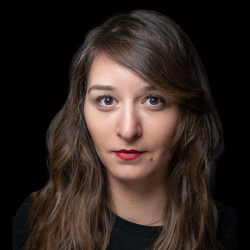
#5 PUBLIC SPACE
“Public Space” interrogates how the physical and symbolic spaces we inhabit — streets, squares, buildings, memorials — shape social life, identity and power. This issue of Kosovo 2.0 examines how people across Kosovo and beyond are striving to reclaim, transform and reimagine public spaces. The magazine delves into the question of who truly "owns" the city and who has the authority to define its memory and future by exploring a landscape filled with war-era memorials, urban redevelopment, abandoned buildings, street art and much more.
|03.06.2013
|
Today in Kosovo, we need to rethink public space not merely as the physical space around us, but as the venue for producing and providing a critique in pursuit of a free dialogue.

Besa Luci
Besa Luci is K2.0’s editor-in-chief and co-founder. Besa has a master’s degree in journalism/magazine writing from the University of Missouri’s School of Journalism in Columbia, U.S..
This story was originally written in English.
Want to support our journalism? Join "HIVE" or consider a donation.